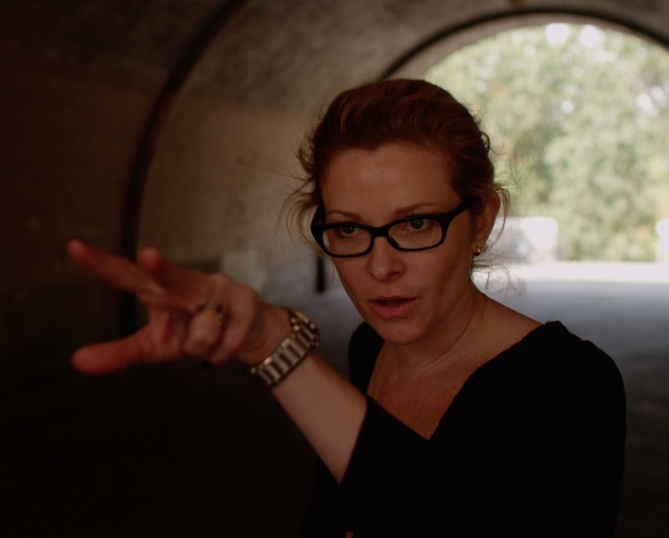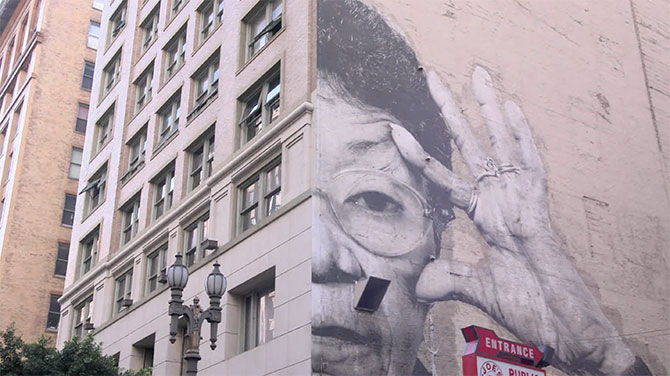
Last year will hopefully go down as a seminal year in film history. It was the year that began a historical reckoning with Hollywood and the film industry’s pattern of systemic sexual abuse and discrimination, as well as the year that female directors, writers, and critics made a new push to end male dominance both behind and in front of the camera. It was the year of Wonder Woman, Lady Bird, and Mudbound, and the year that the new feminist movement began to gain ground in the wake of Donald Trump’s election and Harvey Weinstein’s downfall.
Into a culture brimming with feminist anger and more than a little hope for change comes director Cady McClain’s documentary Seeing is Believing: Women Direct, a short doc examining the aspirations and hurdles experienced by female directors in the current cinematic landscape. The film has been doing the film festival rounds, taking home some jury prizes and short doc awards.
The film focuses primarily on four female directors in different stages of their careers. Lesli Linka Glatter has been working the longest. She directed an Oscar-nominated short film Tales of Meeting and Parting that led her to an extensive TV and film career that includes directing episodes of Amazing Stories, Twin Peaks, Mad Men, Gilmore Girls, The West Wing, and her current gig as the executive producer and director for Homeland. Sarah Gavron is in her middle career as the director of Suffragette, the documentary Village at the End of the World, and numerous shorts. The two younger directors, closer to the beginnings of their careers, are also the film’s two women of color. Li Lu, with several short films under her belt prior to her debut feature There is a New World Somewhere, and Naima Ramos-Chapman, who completed her first short film And Nothing Happened that premiered at 2016’s Slamdance.
The film presents the perspectives of these four filmmakers – with shorter interviews from several others – as they go through their experiences as directors, how they came into the profession, and what they hope for in going forward. Despite differing backgrounds and generations, the problems faced by all four are remarkably the same – the need for mentorship, the difficulty of breaking into a heavily male-dominated industry, the sense of protectionism by older or more established women within the industry that tries to keep new female talent out. All four discuss their early experiences with filmmaking and directing, and how, not having seen or heard much of female directors, it wasn’t even on their radar…until it suddenly was. The need for mentorship and experience is clear—women are largely shut out from many pathways open to male filmmakers simply by virtue of being male, and, with the apparent disparity between male and female directors in Hollywood and out of it, don’t have other women to turn to for guidance and education. It’s an interesting point that Glatter and Gavron were able to work with directors like Spielberg, Eastwood, and Frears, allowing them to break into the industry, while both Lu and Ramos-Chapman have had few opportunities to learn their craft from fellow directors (male or female).
The film argues that it’s the pervasive culture, not raw talent, that keeps women from the director’s chair. Directing has for so long been treated as a male profession that many women who want to work in film simply don’t seem to realize that it’s a path open to them. The film acknowledges that is changing, as more women break the barrier, win accolades, and gain serious press coverage. But it’s also a matter of women helping other women, not feeling threatened by the presence of another woman in a room so often populated solely by men.
McClain doesn’t focus only on these four directors, however, allowing their personal experiences with the industry to expand outward and cover a multitude of issues faced by female filmmakers. A few quick “on the street” interviews has the director asking whether some students can name their favorite female director and – perhaps even more importantly – what they think women can bring to directing that men cannot. Almost to a person, it’s agreed that a diversity of perspective only enriches film, that women do have a different perspective from men and can translate different experiences and understandings onto film. (I do wonder, however, how many of these people have actually seen more films made by female filmmakers, and just don’t know it.)
Seeing is Believing is also a positive film – it doesn’t ask us to spend all our time raging against inequality, even though it depicts quite clearly the lack of opportunity being offered to female directors. Rather it says that we can increase diversity, that we can take the strides that are being made and make even more, and that women have at least as much to contribute to cinematic culture that men do. It also takes pains to mention some past and present female directors of both the indie and the Hollywood scene, including Chantal Ackerman, Ida Lupino, Dorothy Arzner, Jane Campion, Ava DuVernay, and Kathryn Bigelow, reminding us that women have indeed been working in film since its inception, and that the massive disparity between male and female directors within the industry is something that can be fixed.
This positivity was one of the things that I liked most about Seeing is Believing. It celebrates the views of women, the ability of women to break into a male-dominated industry and find a way to succeed in it, but also the necessity of leveling the playing field. Each filmmaker details her goals, the things that she wants to see onscreen, the way that she wants to depict not just her personal experience, but the experience of others. They want to turn the camera eye not just on women but on men as well, a fresh way of seeing and being seen. The film brings home what we’re missing by not having diversity in film. It’s not about driving out or driving down men, but providing the other fifty percent of the population with a cinematic voice. And seeing that, on the screen, from the director’s chair, is immensely important for the next generation of film viewers and filmmakers.
Seeing is Believing covers a remarkable breadth of topic for such a short film, and this often results in moving quickly over aspects that could use in-depth examination. Li Lu has some things to say about people questioning her choice to feature a white woman in her film, but the other issues that must face any filmmaker – race, ethnicity, sexuality, etc. – are largely glossed over. There are some odd choices, like intercutting very short snippets of films that don’t always punctuate what is being said by the interviewees. McClain is making some excellent points, but I found myself really wanting to see a bit more of these scenes, for the film itself to demonstrate more clearly some of its arguments about the female perspective and the importance of increasing gender diversity in cinema.
Despite its occasional lapses, Seeing is Believing: Women Direct is an intriguing film, one that I only wish was longer. I’ve written in the past about the sense of elation in seeing myself on the screen, in seeing a world from a feminine perspective. I almost cried when I watched Wonder Woman because the gaze was so feminine in casting an eye over the female form and mentality. We need more of that. We need to put women in the director’s chair, to give them an equal voice, to see new stories and new perspectives brought to light. We have been living the male gaze for too long – it’s time to live the female one.
Seeing is Believing: Women Direct is currently showing at the Oxford Film Festival.
Go to http://seeingisbelievingwomendirect.com/ for more information.

